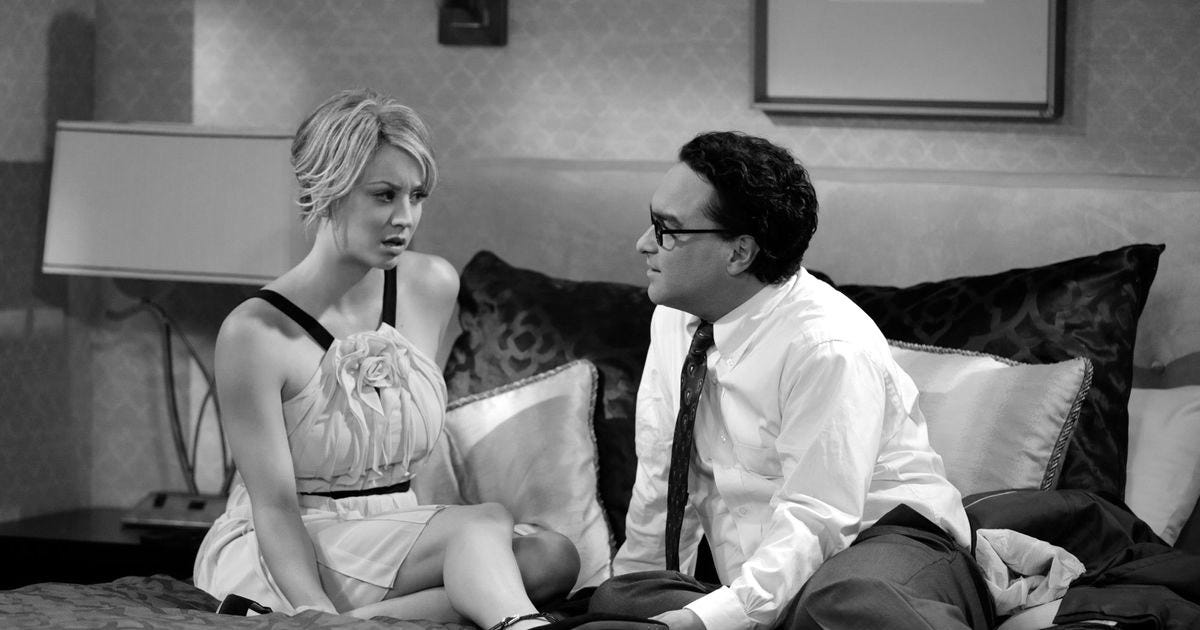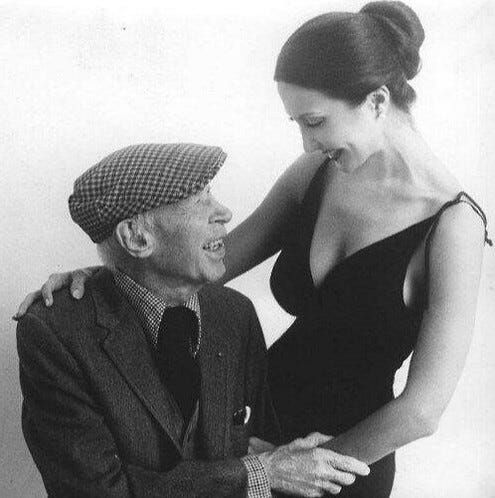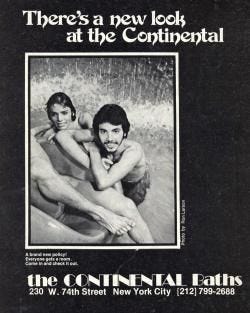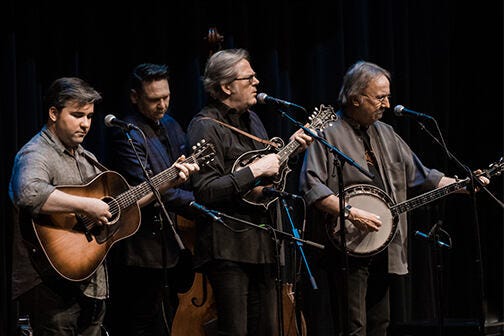The World is full of your Prayers II
Can we finally get on with living, loving, and connecting with others?
“Reshad, whenever you’re ready.”
I took a breath and pressed record. It was the 1970s, and I was recording a multimedia presentation with my Sufi teacher, Reshad Feild. Being young, I felt nervous running the tape deck.
He began to speak:
“A great shaykh in Turkey once said to me, ‘The world is full of your prayers; now, all we need is love.’”
The haunting power of Reshad’s words threw me off balance. If a great shaykh can jettison a world full of religious prayers, why not get on with it and go straight to living, loving, and connecting with others?
Reshad continued:
“Here we talk about love, and yet we continue to walk the streets like sleepwalkers, hardly ever waking up to the real world, which is a world of love. For real change to come about, the love we talk about so glibly must become conscious love. We must learn to love consciously, and that means we must know who and what we are.”
Conscious love. I liked that. But the next statement struck me, so much, it became the seed idea for Bondo:
“The moment we say, ‘I love,’ we bring into play a force that has its own job to do in the universe regardless of ours.”
And now, newly widowed, those words reemerged from my memory. The mysterious Bondo I had been pursuing was a “force that has its own job to do in the universe” — an active conscious energy. I was still wrestling with the question: Do I wait for the Force to do its job? Or get on dating sites like Sarah insisted? Or put on a tinfoil hat and collect the stuff?
I fired up the first slide in my Bondo focus group, of astronaut Ed White taking the first space walk.
I asked the group, “What would happen if White suddenly found his golden umbilical severed? No oxygen, heat, biometrics, air pressure, or BONDO!”
People were not making the connection, so I went straight to the point: “When Karen passed away, that was me, severed from the Bondo mothership.”
After nine months, my terror of drifting into the Bondo-less vacuum of space had become an ally. I had become a petri dish, growing Bondo from scratch. “What is this substance missing in my life?” I wondered. “Is it longing, clinging, or something more vital and central to living — the force Reshad spoke of?”
Maybe Bondo is the source of energy for the entire universe.
Remember Janey, the mysterious woman who showed up at my doorstep with a blueberry pie? A week later, she invited me to a 5Rhythms dance, and despite my best intentions to be a great date, everything out of my mouth went sideways and pushed us apart.
Some months later, I invited her to dinner, and as we walked to our respective cars, that same “pushing apart” energy entered the final hug.
“What was that?” I wondered.
What if that pushing apart was like nuclear fusion, the energy source for the Sun and stars? When you bask in the Sun, the energy of nuclear fusion warms your face and supports all life on Earth. Think about it; you can lay in the sun and let nuclear fusion warm your bones.
The Chinese recently created fusion in a reactor — a warm and fuzzy 1066 seconds until the particles broke up. I was hoping for something longer.
The Sun’s energy results from these “pushing apart” forces. Positively charged hydrogen ions push apart with such power that it takes immeasurable heat and gravity to overcome these electrostatic forces.
If, by chance, the hydrogen ions get super close — within a millionth billionth of a meter of each other — and at a temperature exceeding ten million degrees Celsius, the enormous gravitational mass of the Sun creates enough pressure for fusion to occur. In fusion, the pushing apart force is overcome to bind the two light hydrogen atoms together to form something new — a heavier helium atom — and, with it, a burst of energy. Sounds like dating.
How does nuclear fusion relate to Bondo?
Bondo could be described as the fusion of opposites released as the energy of love. Whereas love is unitive, Bondo is like a chemical reaction. Better words for Bondo than intimacy might be engagement, Plato’s Eros, or even Tantra. Tantra is a Sanskrit word that means the “warp of a loom” — a sacred weaving of opposites.
But I’m sticking with Bondo.
In the sitcom, “The Big Bang Theory:” Penny, a babe-alicious actress, moves next door to Leonard, a socially awkward physicist, and like human-charged particles, their neighborly circumstances get them close enough for their worlds to collide. Like two isotopes of hydrogen toying with fusion, they are forced together by proximity. Geeky Leonard is smitten by Penny, and they eventually marry — a fusion fairy tale dating back to an era before algorithms took over mating.
If you look at the state of the world, the repellent forces between people and nations seem near impossible to surmount.
After Karen’s passing, I found myself as Rip Van Winkle, waking from a 40-year dream to discover a world where men were suddenly white patriarchs of toxic masculinity. Yikes. Women were leaving men in the dust, making strides in confidence, ambition, mutuality, and independence.
Hooray, women! But that doesn’t solve the love quandary when partners are repelled by their mates. Why does the fun-loving personality you were attracted to suddenly seem loud and obnoxious, or the practical and reliable partner seem stultifying and boring?
What are the electrostatic forces that repel love? Or better put, will Bruce Miller find Bondo again?
Older people aren’t supercharged particles coaxed by their biological imperative. We bring elder complications into a relationship — property, illness, children, habits, and droopy bodies to make fusion near impossible.
In my unscientific survey, I found a sentiment universally expressed by women my age:
“I’m good, thanks.”
It was becoming clear that the only one interested in a long-term relationship was my dog, Miko.
Around age 63, people begin to “close up shop.”
The Social Security folks understand age 63, but it catches the rest of us off-guard. A great realignment begins to take place in our striving. Some people pull back from business ambition to create a reflective space, write a memoir, or volunteer in the community. Women often focus on their grandchildren.
This becomes more pronounced at age 70. The big Seven-Oh brings a subtle (and unwelcome) looming of the afterlife. The world and its inhabitants appear ridiculous in ways you can’t pin down. Hindus call it maya or illusion. At 70, you aren’t driven to launch an all-new, crazy-stretching, hormonal chapter of living. Except for me.
So here’s my question: Lacking hormones, what force brings humans into a fusion reaction?
Anais Nin didn’t buy into the closing up shop theory either. She was a friend or lover of Henry Miller, John Steinbeck, Antonin Artaud, Edmund Wilson, Gore Vidal, James Agee, James Leo Herlihy, and Lawrence Durrell. She also kept two husbands: one in New York and one in Los Angeles. She kept her secret “bi-coastal trapeze” going until her death at age 73.
Keeping this charade going proved exhausting, but Anaïs Nin understood Bondo as a form of fusion: "Love never dies a natural death,” she said. “It dies because we don't know how to replenish its source."
She also spoke to the quandary I now faced in my seventies:
Older people fall into rigid patterns. Curiosity, risk, and exploration are forgotten by them. You have not yet discovered that you have a lot to give and that the more you give, the more riches you will find in yourself.
You must not fear, hold back, count, or be a miser with your thoughts and feelings. It is also true that creation comes from an overflow, so you have to learn to intake, to imbibe, to nourish yourself, and not be afraid of fullness. The fullness is like a tidal wave which carries you, sweeps you into experience and into writing. Permit yourself to flow and overflow.
Allow for the rise in temperature. ~ Anais Nin
Ten million degrees Celsius, to be exact.
“I feel like a kid in a candy shop!” Carole Anne gushed.
Carole Anne and I had just finished the world’s first Bondo focus group, so we decided to give Bondo a test drive. I watched in awe as Carole Anne leaned “heart first” toward every guest at a big 70th birthday party we were invited to. As our first attempt to make Bondo a conscious practice, we were unprepared for the connective tissue we unleashed.
“Bruce, you need to reel me in!!” Carole Anne squealed in mock distress.
We had presented twelve practical ways to build Bondo to our group, so for the party, we focused on numbers one and twelve:
1. Lean Heart First.
If there was a Church of Bondo, a chair would hang over the pulpit to remind us that God is found in the Other.
And by this, physically turning your chair face-to-face awakens the opportunity for Bondo. Sounds obvious, but the opposite is more likely. Researchers found that people rarely look at each other in conversation.
Florence Mayrand of McGill University developed an eye contact measuring device and found people “gazed at each other's faces simultaneously for just 12 percent of a conversation… and mutual eye-to-eye contact only 3.5 percent of the time."1
I taught myself to use my chair like a mnemonic, turning it face-to-face to remind me to open to the Bondo. Ram Dass was more explicit:
Treat everyone you meet like God in drag. ~ Ram Dass
12. Give the Gift of Attention
If you threw out the other eleven, attention would do the job. Attention is one of the greatest gifts we can offer to another. It is a sacred energy that says, “You are important to me.”
Author/scholar Jacob Needleman understood that humans flourish from attention:
When you give your deep attention to another human being, they flourish… Love is an act of giving what only human beings can give… In order to sustain love, you have to bring intention into it, and intentional love is work — great work, joyful work — but still work. You cannot sustain a relationship just by the force that made you fall in love.” ~ Jacob Needleman
I watched Carole Anne flutter like a butterfly from guest to guest. When she finally plopped beside me, I laughed, “There… I reeled you in.”
An old guy sat across from us, so we turned our chairs.
“Hi, I’m Bruce,” I said.
“I’m Carole Anne.”
“Hi y’all, I’m Clarence.” Clarence struck me as an aging free spirit with an Alabama drawl — the sort of guy a Chicagoan would ignore, but this was our graduation exercise.
“So, how do you know Debra, our birthday girl?” I asked.
“Ah’m a friend of a friend,” Clarence replied. “Why y’all here?”
“We just had a workshop on Bondo,” Carole Anne said. “On forming intimate connections.”
“My wife passed away,” I added, “so I’ve been exploring how to create intimate relationships. Bondo’s a word my wife and I invented — also an auto body filler.”
Clarence laughed, then consoled. “I used my fair share of Bondo. And I’m sorry to hear about your loss.”
“It’s tough. I’m writing about it.”
“Are you a writer?”
“A wanna-be. How about you?”
“Retired. I was a community health worker.”
“Tell us more,” Carole Anne said.
“My claim to fame, during the AIDS epidemic, I tested men in gay bathhouses.”
Our chairs were already turned, so we leaned in — way in.
“That’s incredibly brave,” Carole Anne said. “And loving and caring.”
“The government sent you into gay bathhouses!?” I blurted. “I missed this bit of history.”
“Oh, absolutely. Gay people felt so stigmatized during the AIDS epidemic that they wouldn’t come to a clinic. Until Rock Hudson died, there was all this religious judgment and shame. This was the Reagan years.”
“They called it the ‘gay plague,” I remembered, “like it was a big joke. So, I’m amazed.”
“Our job was public health, so we said the best way to control AIDS is where the sex was happening.”
“What’s it like in a gay bathhouse?”
“Use your imagination, Bruce,” Carole Anne teased.
“It’s just like a spa…” Clarence explained.
“Okay,”
“…but with spaces for sexual activity.
“And you just walk around with a syringe?”
“No,” Clarence laughed. “I would set up a table in front of the bathroom, and people would walk up and ask questions. They started to trust me once I came around a bit.”
“Weren’t you scared of contracting AIDS?” Carole Anne asked.
“I got splattered with blood once.”
“Jeez.”
“Fortunately, he tested negative,” Clarence winked like a rim shot.
I sat for a moment, trying to erase the image of naked men getting it on in front of a government employee.
Just then, a woman sat across from me.
“Are you Karen Miller’s husband?”
“I am.”
“I know you from; we all went hiking together to a waterfall.”
My brain turned a slow somersault and realized no such event existed. I didn’t want to disabuse her of her memory.
“It’s so good to see you again,” I smiled without losing the Bondo connection.
She smiled back like a long-lost friend and moved on.
“Carole Anne, what is going on?” I panicked. “Are we in a movie script?”
I jumped into my movie trailer voice: “When a young woman can’t shut the love valve, she goes full Bondo — with the clinician, pool boy, even the dog groomer. Is it intimacy or lunacy? Meg Ryan finds out in the romantic comedy Full Bondo.”
“That’s what’s happening!” Carole Anne blurted. “I don’t want to overwhelm people, but I’m in my zone. I feel like I’m coming home, flowing in the moment. And I love being Meg Ryan,” Carole Anne laughed.
“Maybe it’s a Woody Allen film,” I suggested, switching back to another movie trailer:
“When a midlife housewife overcharges her Bondo, she seeks out a psychiatrist — and not any old shrink; it’s Sigmund Freud’s long-lost great nephew. Watch Diane Keaton team up with Woody Allen to deliver the psychiatric fun fest of the year… Shrinking Bondo!”
“Yeah-yeah,” Carole Anne laughed. “When you said Bondo was a superpower, something happened. It gave me permission to be myself — to feel recognized and not diminished by fear.”
I felt a wave of Karen energy suddenly enter and, with it, a surge of tears right in the middle of the party. Is it possible to grieve and guffaw simultaneously? Bondo is like that.
We headed toward the band and started to waltz. The empty dance floor suddenly filled.
“Before, I could only enter the Bondo space when I was dancing,” Carole Anne said, leaning in. “Now, I can choose to go there. Just go right there and be in my heart.”
Carole Anne was Karen’s best friend.
Like Thelma and Louise, Carole Anne and Karen went on fun weekends while I watched the kids — to contra dances. It wasn’t ideal, but I was happy Karen could absorb some wild energy.
And now, as Carole Anne and I waltzed, my missing Bondo felt so tantalizingly close — even if just a cupful.
In our focus group, we struggled to decide if Bondo implied commitment or whether you could get a cup of Bondo anytime — even in the drive-through.
“I’m not looking to have a relationship at Chick-fil-A,” Sarah asserted. “I just want my sandwich and then back on the road.”
Carole Anne disagreed. “That’s a real person with feelings handing you the sandwich. Of course, there can be Bondo.”
Commitment or not, I savored my cup of Bondo on the dance floor. From now on, it would be a cup here, a cup there.
Afterward, we drove to a scenic overlook on the Blue Ridge Parkway, where we asked some tourist girls from Texas to take our picture. They had no idea what was going on, but they could feel the Bondo and seemed giddy.
The next day, Debra, the birthday girl, called. “Thank you, you brought so much life. It wouldn’t have been a party without you.”
I wanted to find out if Bondo was real, and I got my answer. It is a superpower.
Here’s the soundtrack Reshad and I created circa 1978:





















I love that photo of the three of you, Bruce. I like the thought of a cup of Bondo here and there. Interesting read!!